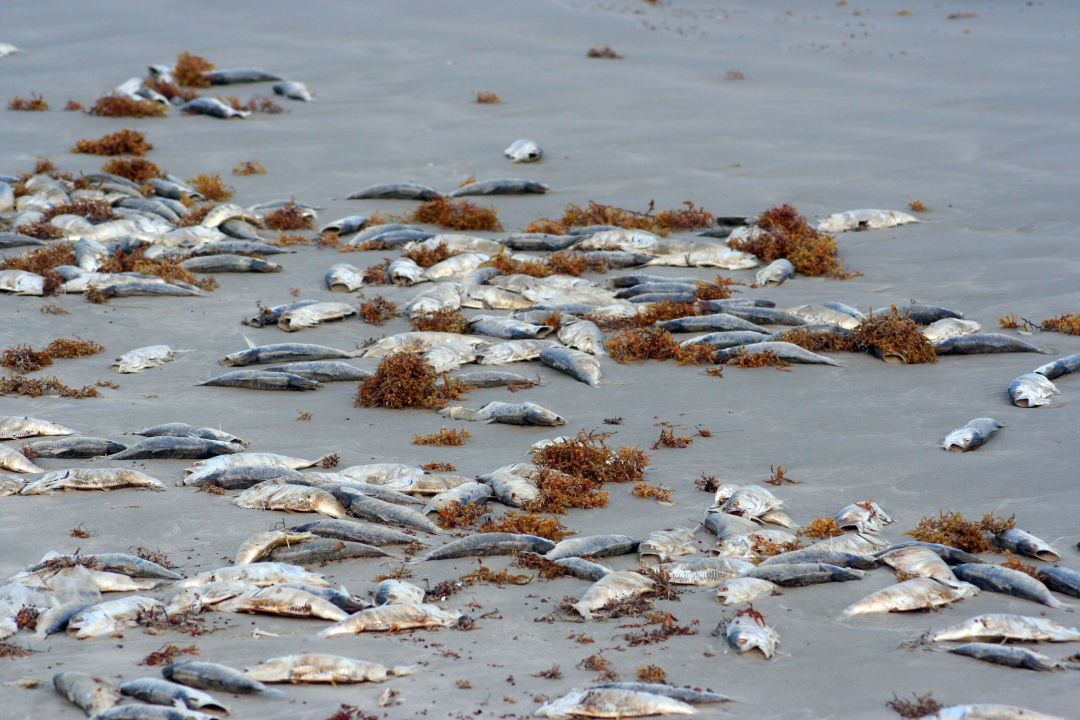From the Editor: Vote for the Environment

Image: Shutterstock
I go to the beach a few times a week, but I was housebound this summer by red tide. I grew cranky and restless and gained a few pounds. Oh, I thought, I have the Florida version of seasonal affective disorder, the winter depression from long, dark days that affects Northerners.

Susan Burns
Image: Lori Sax
Anything I suffered, though, was minor. Red tide has caused a crisis in Southwest Florida coastal communities. The bloom started a year ago this month, but for Sarasota, its worst effects weren’t felt until the first week of August, when the red tide moved ashore. A New College researcher told me he’d checked his monitoring sites in Sarasota Bay one day and all was well. The next day, he said, the bay was “a dead zone.”
Hundreds of tons of dead fish were scooped from beaches and trucked to landfills. Dolphins, manatees, sea turtles, pygmy whales and even a whale shark washed ashore. Fish populations, like snook, which spawn in the summer in Charlotte Harbor, may take generations to come back.
The human toll is also devastating. In a Visit Sarasota survey, 40 percent of Sarasota businesses reported declines of more than 50 percent compared to last summer. At an August town hall meeting, business owners implored state legislators to do something about lost revenues and the impact the slump was having on their employees. All Faiths Food Bank reported a 40 percent increase in people who couldn’t afford the food their families needed. And doctors reported more patients with breathing problems, headaches and nausea.
As I write this in September, Sarasota is still experiencing high concentrations of Karenia brevis, the algae that causes red tide. But what makes the algae bloom has fueled a public debate as people worry that their quality of life and the future of Florida—which relies on a beautiful, healthy environment more than most other states—are at stake.
Mote Marine Laboratory scientists stress that red tide is a naturally occurring organism that existed long before human settlement. Still, as Dr. Michael Crosby, Mote’s CEO, said at a Sarasota Argus Foundation meeting, “These intense blooms are not normal. It’s clear that excess land-based nutrients exacerbate the growth of all harmful algae.”
Theories abound about where those nutrients come from. Some think the water released from Lake Okeechobee, which contains blue-green algae, a toxic stew fed by chemicals from the sugar industry, is flowing through the Caloosahatchee River and into the Gulf, feeding K. brevis. Others point to runoff from agriculture and phosphate mining. Leaky septic tanks and homeowners who fertilize their lawns, especially in the summer rainy months, could be contributing to the explosion of the algae as well.
It’s obvious we need to study red tide. Mote and other scientists are researching what combination of nutrients and natural conditions fuels red tide and what, if anything, can be done to manage it. There’s no quick fix. Research takes years of observation and studies, and Crosby says funding is in short supply, especially after the bloom disappears.
Environmentalists have raised alarms about harmful algae blooms for decades, but state legislators have largely ignored them. Instead, they have slashed rather than strengthened water-quality standards. During his two-term tenure, Gov. Rick Scott stacked regulatory agencies with industry insiders, and in 2011, he cut $700 million from Florida’s water management districts.
The legislature also has ignored a constitutional amendment that voters approved in 2014, which required them to use real estate transaction taxes to acquire and preserve land and water. Only a fraction of the more than $700 million available each year has been used to buy land. (This year, $100 million was allocated.) This summer, the nonprofit Earthjustice, which is dedicated to litigating environmental issues, won a lawsuit to force the legislature to honor the amendment, but Florida’s senate president and house speaker appealed the decision, ensuring that nothing will be done as the case winds its way through the courts again.
Eventually, this red tide bloom will fade, and my trips to the beach will resume. But my fear about Florida’s fragile environment isn’t going away. For me—and many others—it’s time to elect leaders who understand that clean water and environmental protection are the will of the people—and essential to the state’s economic health. The November elections are around the corner. I intend to listen to what every candidate says about these issues; you can also see how those in office have voted or look at which elected officials and candidates are winning support for their environmental positions by going to these sites: Ballotpedia’s billtrack50.com, Progress Florida’s People First Report Card, Florida Conservation Voters and Florida Sierra Club.



